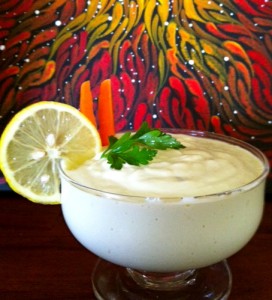Guest Writer for Wake Up World
Sunflowers are cool.
We used to belong to a CSA (Community Supported Agriculture) in the states years ago and every week we did our share of weed pulling and planting before taking home our rewards of beautiful organic produce. The first activities my girls did when we arrived on the farm was to pet and feed the two llama brothers, pick some fresh stevia leaves to chew on then run through the sunflowers that created a great enclosed “fairy garden” for them to play in. It was a wonderful time for us all and yet another avenue which helped us to stay connected to where and how our food was grown.
Sunflower was initially a North American crop but became very popular in Russia, the Ukraine and Germany due to the oil production which takes up about 80% of all sunflower crops world wide.
[pro_ad_display_adzone id=”110028″]
Knowing where your food comes from is important. An example of why is in crop rotations which are an effective technique in controlling disease, weeds and insects as well as helping with fertility and the nourishment of the soil.
Sunflower can be rotated with soy, corn, wheat and canola which are usually GMO. Sunflowers are not typically a planting that needs high amounts of pesticides or herbicides but there will be contamination from the rotational crops used. Sunflower grown in Russia, the Ukraine and other surrounding areas do not have the issues of GMO that the U.S. does. Australia’s crops will not be as contaminated but with all the new gm trials happening countrywide it is a growing concern as well.
It has been shown that sunflowers absorb heavy metals and so have been used extensively near Chernobyl and more recently Fukushima. It is said that Sunflower can remove 95% of the radiation in soil in 20 days where it would normally take about 30 years until radiation levels were reduced to a “safe” level.
Soaking sunflower seeds starts the germination process which increases the already impressive nutritional profile. Rich in Vitamins A, B, D and E as well as being high in protein and iron makes this little seed a powerhouse food!
Sunflower seeds are said to be good skin protection, benefits bone health, and is also an anti-inflammatory. They are also touted in having excellent cardiovascular value.
Sunflower seeds are tasty in salads and sandwiches and eaten alone. We add germinated seeds to cereals in the morning or even in our smoothies. We grind nut, seed and vegetable combinations together to make sandwich spreads that are quick and tasty. When we don’t feel like bread we roll the mixture into nori sheets for lunch or snacks.
In the recipe below it works beautifully with cashews to create a creamy and satisfying condiment or dip.
Cashew-Sunflower “Mayonnaise” or Dip
This is brilliant!
¼ cup each, sunflower seeds and cashews soaked in water overnight
1/3 cup water
1/4 cup lemon juice
½ tsp sea salt
1 small clove garlic
1 tsp prepared or ¼ tsp dry mustard
½ cup olive oil
Grind seeds and nuts first if your blender is not very strong. Place all ingredients except oil into blender and process on high until smooth. As blender is running pour olive oil slowly and process until thickened. Use immediately as a dip or spread on sandwiches or refrigerate for future use. Our favourite way of enjoying this is as a dip with lots of fresh organic carrots!
Article Sources
About the Author
Jeani-Rose Atchison is a health advocate, and home-schooling mother of five who also finds time to write about nutrition, whole foods and environmental concerns. She authored, Every Day Vegan – 300 recipes for healthful eating which is a mainstay in vegetarian kitchens. Atchison’s latest book, Food for Thought – Thought for Food is chock full of delicious whole food recipes. It also takes a controversial look at the food we eat today and the processes involved in bringing it to your table. Can your food make you ill? The answer may shock you!
To find out more go to Jeani-Rose’s Facebook or Website
[pro_ad_display_adzone id=”110027″]







